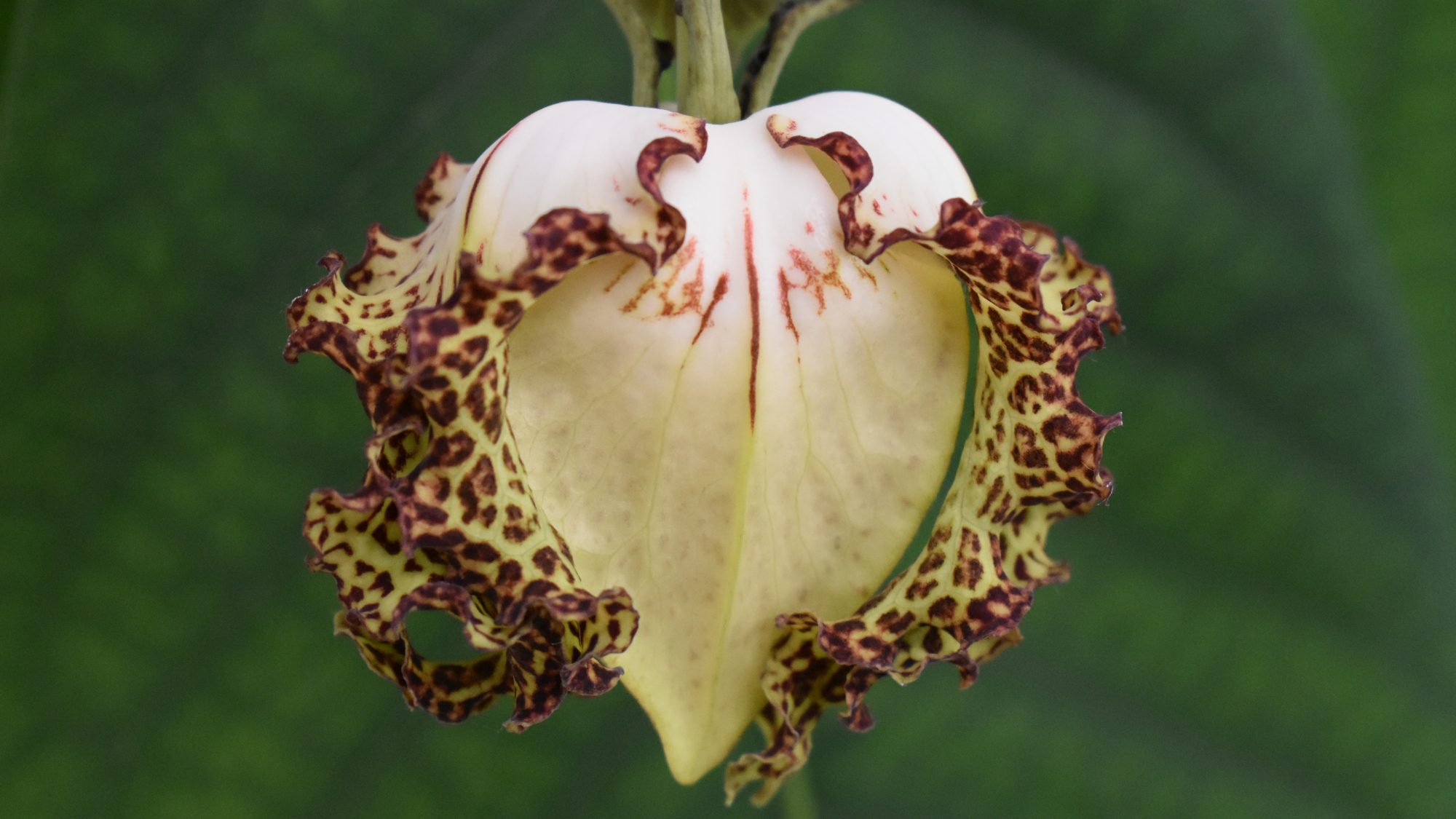The unusual flowers of this tropical species can be spotted in the canopy of the Palm House.
A native of tropical Africa to south west Kenya and north west Angola, the Calabash nutmeg is a member of the custard apple family, Annonaceae. This tropical family contains over 100 genera. Monodora myristica is one of 14 species which occur throughout Africa. It grows mainly in the wet tropics where it can reach 35m in height and develops a broad canopy of simple, alternate leaves to 45cm in length. The attractive pendent flowers are lantern-like in their appearance, bearing broad, cream inner petals which are surmounted by three slender fluted, speckled petals. These produce globular berries up to 20cm in diameter, and the fragrant, creamy pulp contains many individual seeds. The fruit is used as a condiment, for medicinal purposes, including the treatment of coughs, and also to make rosaries and necklaces. The bark is used in medicine to treat stomach aches, and the timber is used for carpentry and joinery. The generic name Monodora refers to the single fruits. This species was traded as a substitute for the more expensive nutmeg Myristica fragrans which comes from Indonesia, hence the common name.

